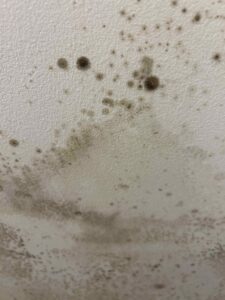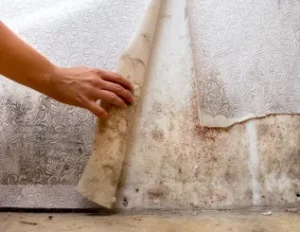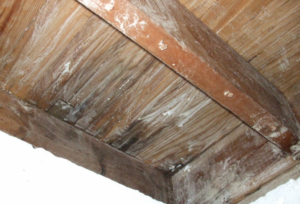Basements are naturally prone to moisture and humidity, making them a common location for mold growth. Whether it’s due to leaks, poor ventilation, or flooding, mold can quickly spread in dark, damp spaces. Identifying mold early is essential to protect your home and health. Here’s how to determine if your North Arlington, NJ home has mold in your basement and what to do about it.
Common Signs of Mold in the Basement
1. Visible Dark Spots or Stains
Mold often appears as black, green, white, or brown spots on walls, floors, ceilings, or exposed wood. If you notice discoloration that continues to grow or return despite cleaning, it could be mold.

2. Musty or Earthy Odor
A persistent, musty smell is one of the most common indicators of mold. If your basement has an ongoing damp or mildew-like odor, mold may be growing behind walls, in insulation, or under flooring.
3. Peeling Paint or Wallpaper
Excess moisture can cause paint or wallpaper to bubble, crack, or peel away from surfaces. If this occurs in your basement, check underneath for signs of mold growth.

4. Warped or Rotting Wood
Wooden beams, support structures, and furniture in basements can absorb moisture and become a breeding ground for mold. Warped, soft, or rotting wood should be inspected for fungal growth.

5. Increased Allergy Symptoms
If you or your family experience sneezing, coughing, itchy eyes, or other allergy-like symptoms when spending time in the basement, mold spores could be in the air.
Where to Look for Mold in Your Basement
Mold can grow in several places, including:
- Walls and ceilings (especially near leaks or condensation areas)
- Carpet and rugs
- Wood framing and support beams
- HVAC systems and air ducts
- Behind insulation or drywall
- Stored cardboard boxes and furniture
How to Test for Mold
If you suspect mold but aren’t sure, try these methods:
- The Bleach Test: Apply a small amount of diluted bleach to the area. If the discoloration lightens, it may be mold.
- Moisture Meter: High moisture readings in walls and floors may indicate hidden mold growth.
- Professional Mold Inspection: For serious concerns, contact a restoration expert for evaluation & Assessments.
How to Prevent and Remove Basement Mold
Prevention Tips:
- Use a dehumidifier to maintain humidity levels below 50%.
- Repair leaks and waterproof foundation walls.
- Improve ventilation with fans or windows.
- Keep stored items off the floor and in plastic containers instead of cardboard.
- Clean and inspect your basement regularly.
Removing Basement Mold:
- Small mold spots can be treated with vinegar, hydrogen peroxide, or baking soda.
- Avoid using bleach on porous surfaces like wood or drywall.
- If mold covers a large area (over 10 square feet), professional remediation is recommended.
When to Call a Professional
If mold growth is widespread, has returned after previous cleaning, or is causing health issues, professional remediation is necessary. Restoration specialists can identify the source of the mold, safely remove it, and prevent future growth.
Final Thoughts
Mold in your basement can lead to serious structural and health problems if left untreated. By recognizing the signs early and taking action, you can protect your home and loved ones. If you suspect mold in your basement, don’t wait—contact a professional restoration company to assess the situation and provide safe, effective mold removal.
Need expert mold remediation? Contact RestoPros of Hudson County today for professional inspection and removal services.
